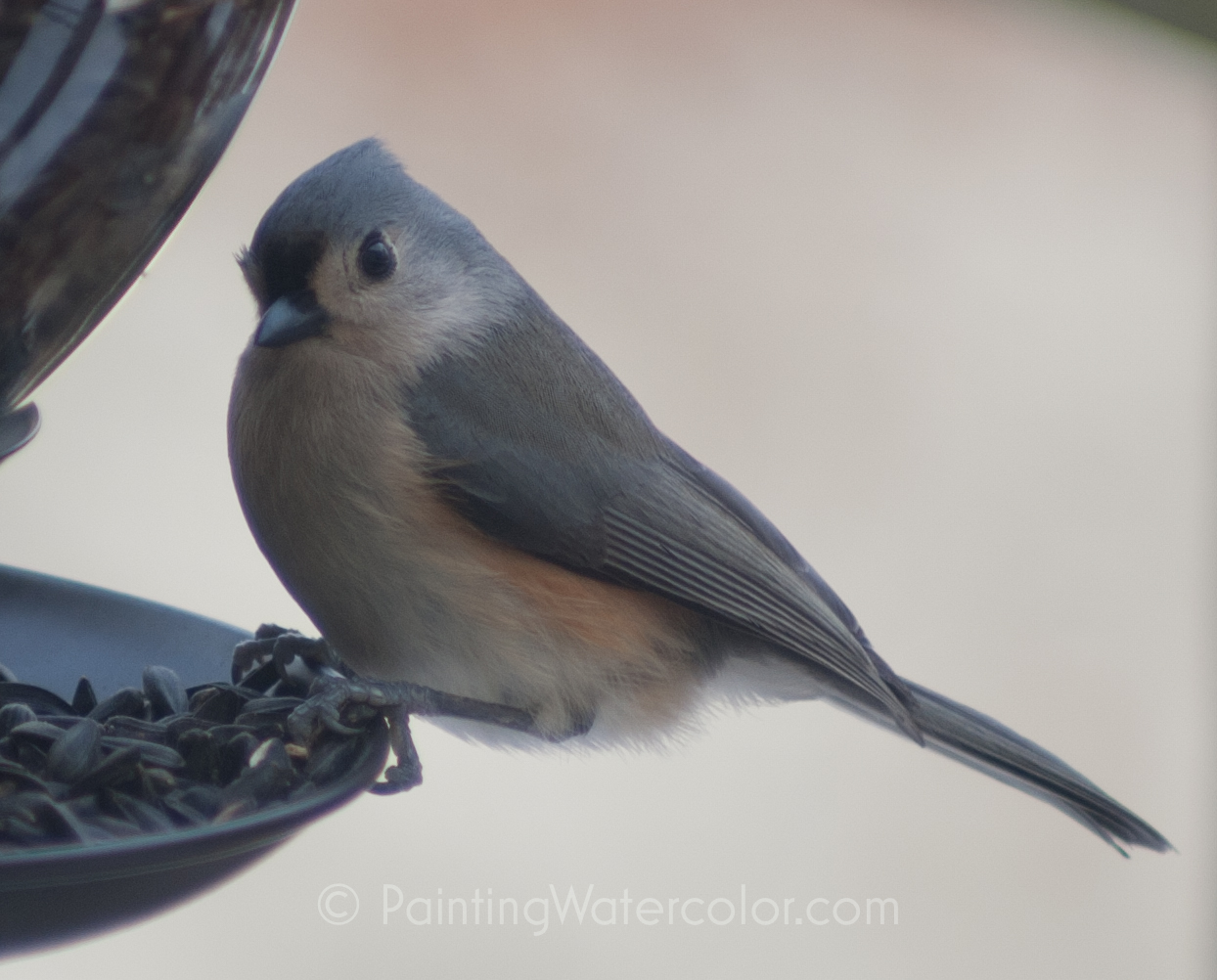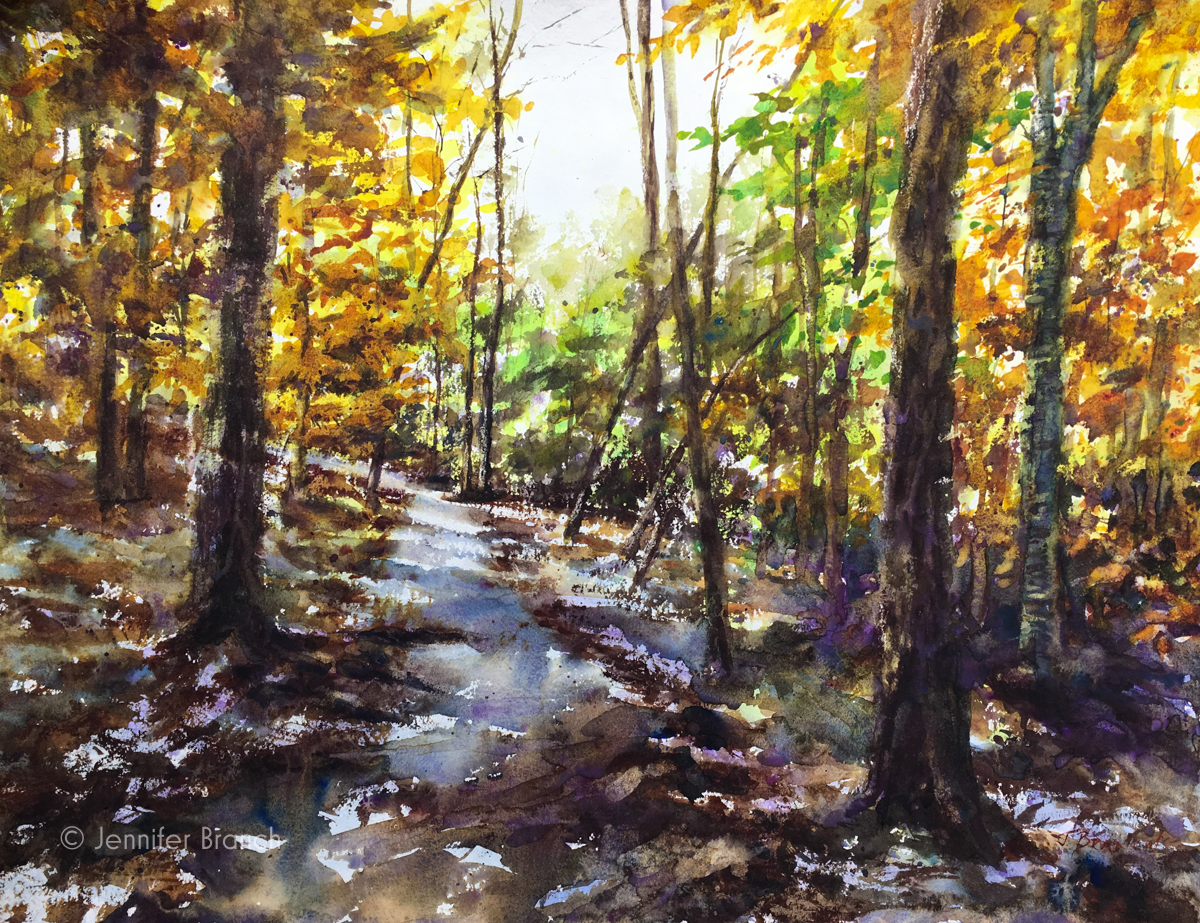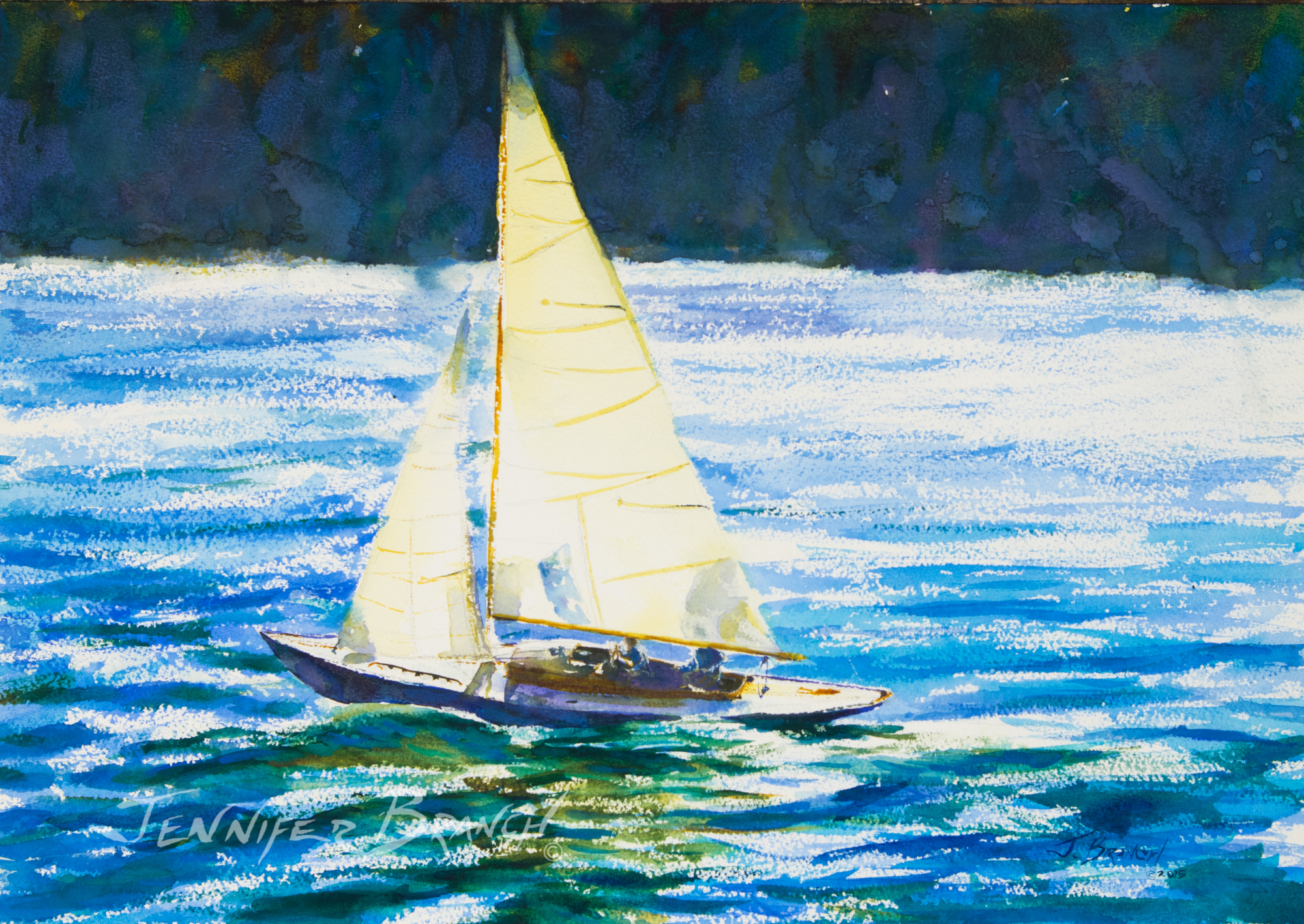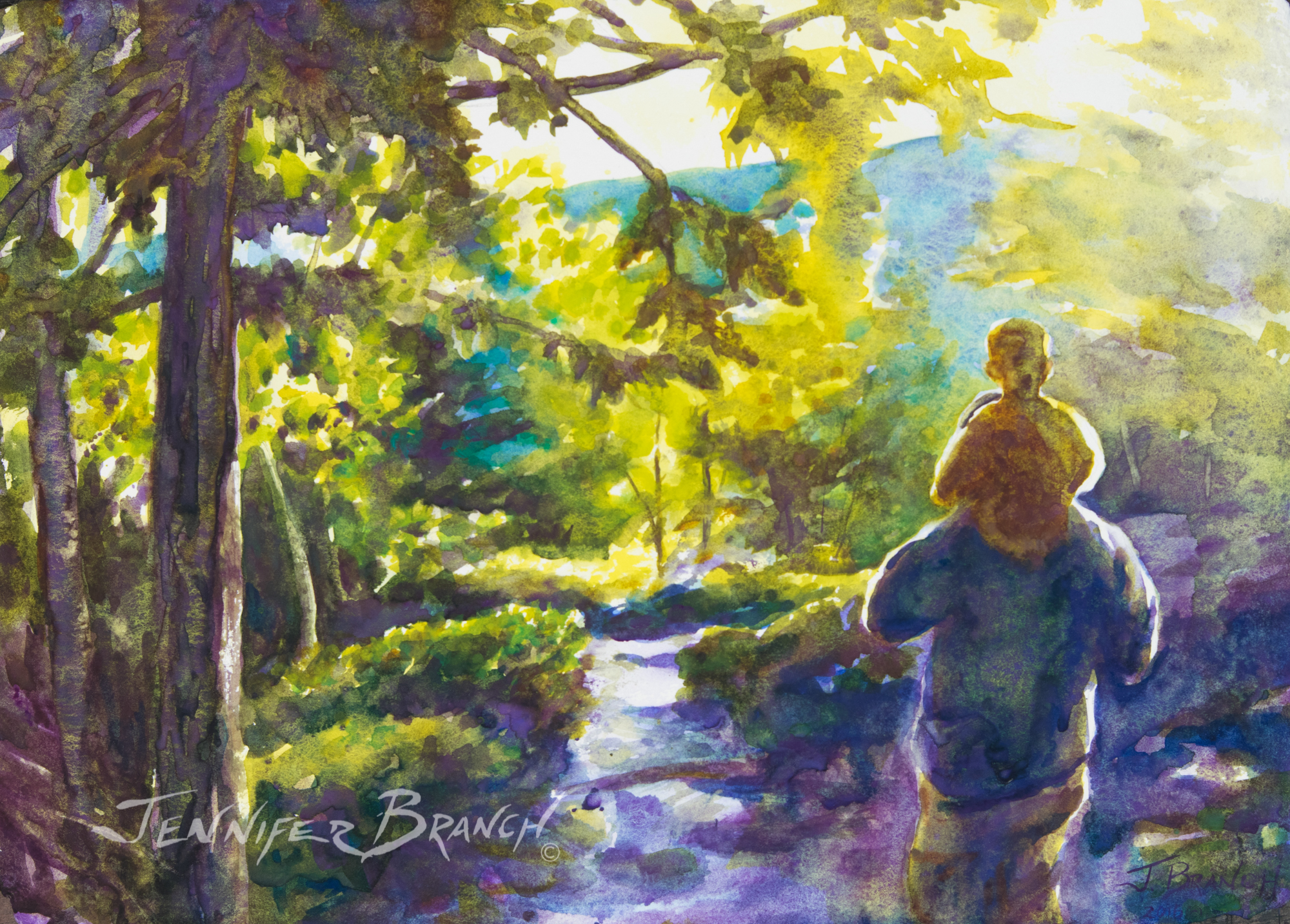Painting Demonstration 1
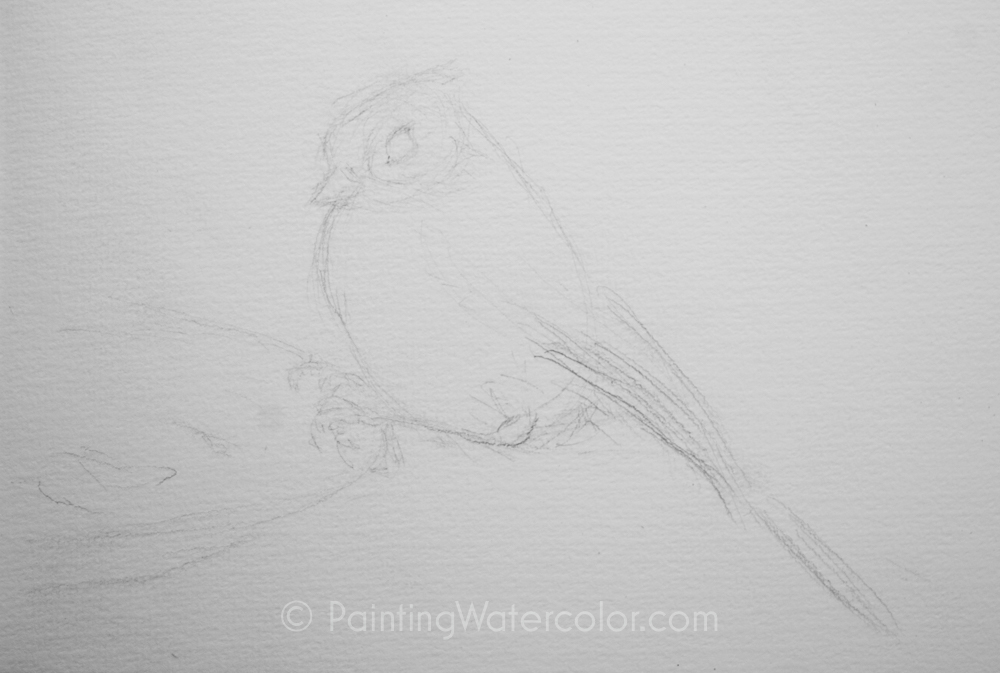
This cute little bird sketch takes less than 20 minutes and only needs 3 paints, Cobalt Blue, Ultramarine Blue and Quinacridone Rust!
Start by lightly sketching the bird.
Disclaimer: Jennifer Branch Gallery is a participant in the Amazon Services LLC Associates Program, an affiliate advertising program designed to provide a means for sites to earn advertising fees by advertising and linking to amazon.com. I receive a small rebate for your entire order (starting at 4%) if you choose to purchase through Amazon. Most items can be bought multiple places and I highly recommend local art stores if you have one! Any other recommendation links I receive no compensation for.
These referrals help me support this website, and I thank you for any purchase you make through them. I will never recommend a product I have not used frequently and believe is the best tool for the purpose!
Painting Demonstration 2
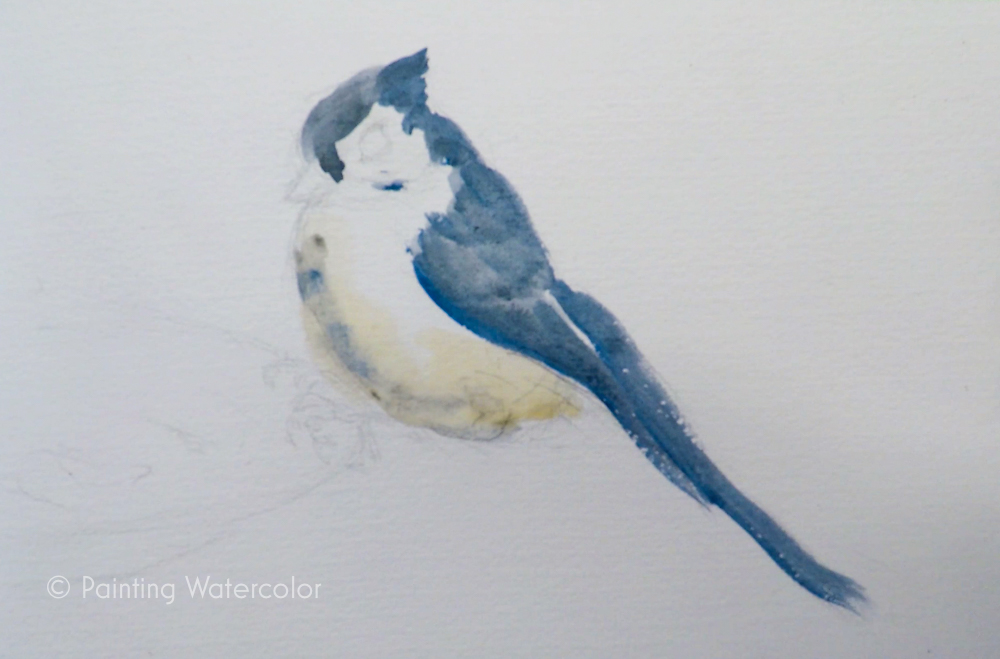
First, I loosely paint the bird's body. The blue gray color is Cobalt Blue + Quinacridone Rust. The variations are simply changing the mix ratio up.
The warm red of the bird's belly is almost entirely Quinacridone Rust. It's amazing how it becomes the perfect soft red when watered down!
Painting Demonstration 3

The sunflower seeds are painted in mostly Ultramarine Blue and Quinacridone Rust. A slightly deeper blue makes them a lot darker, in contrast to the chalky Cobalt Blue.
At the end of the first wash, I splatter on some paint drops, very loosely. I want to keep this sketch fun!
Artist Tips
Don't be afraid to make mistakes.Just have fun with the paint!
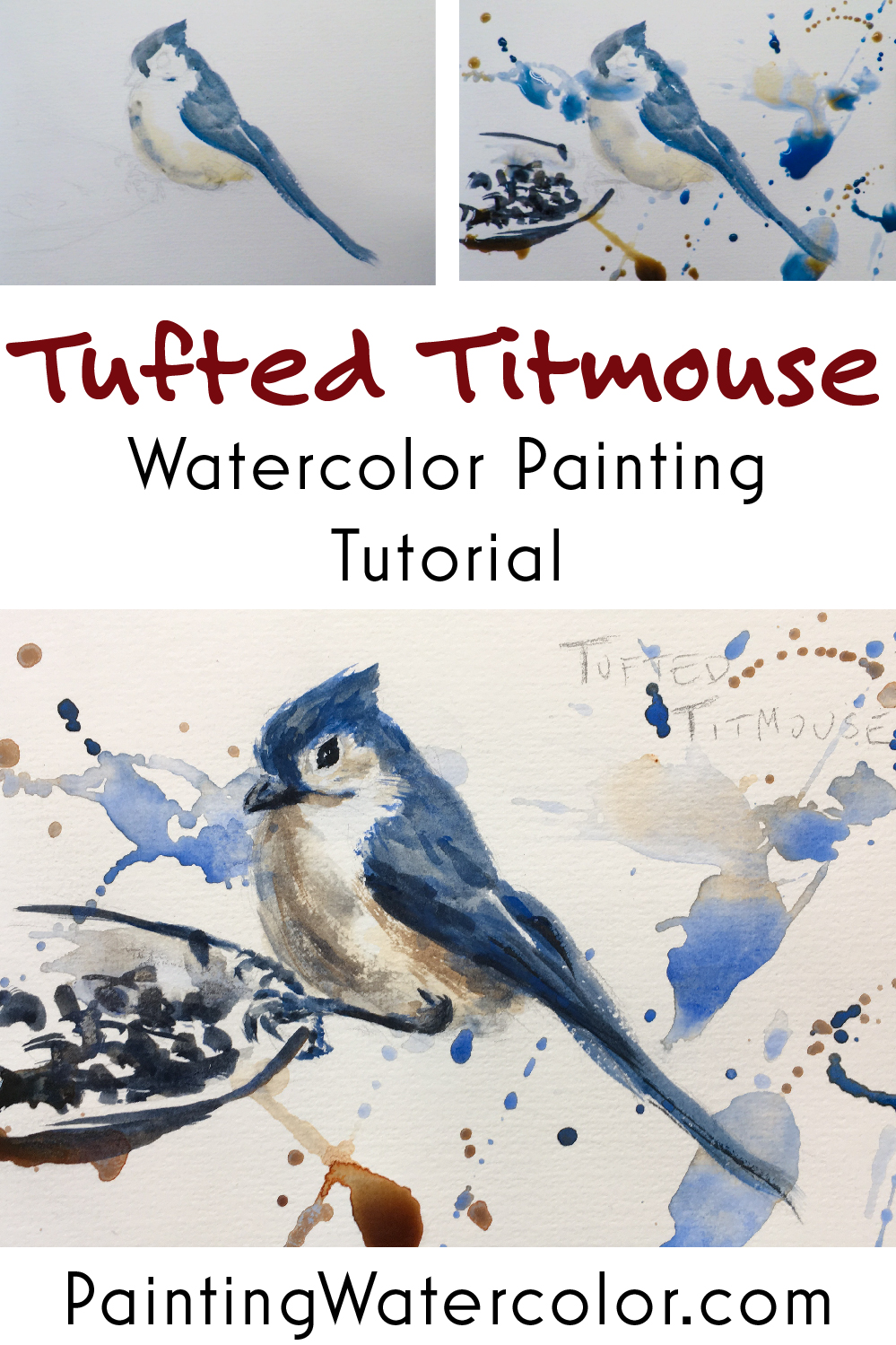
Painting Demonstration 4
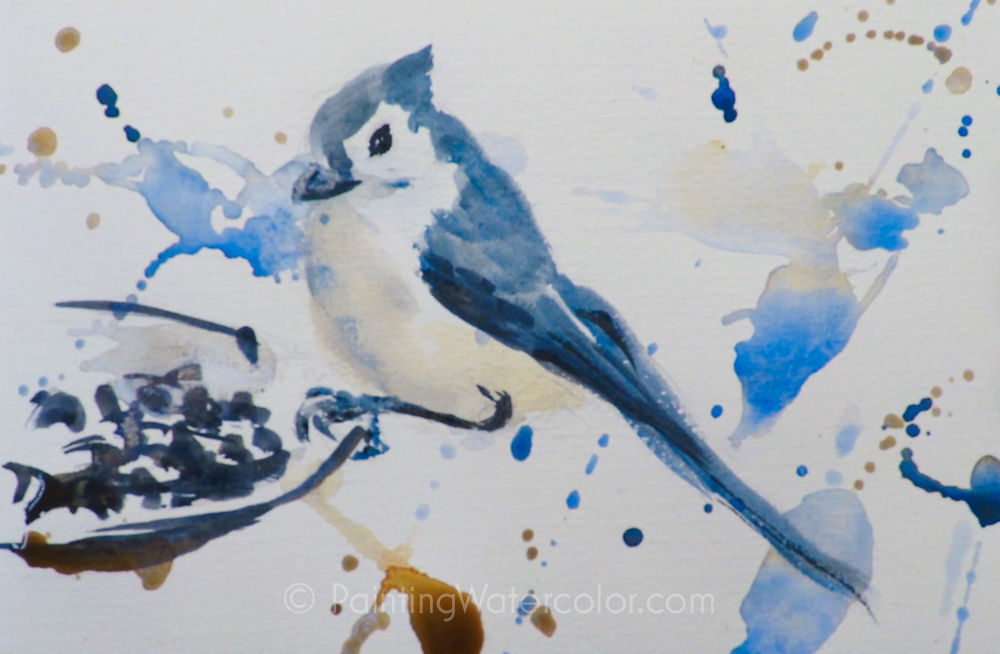
I let the sketch dry most of the way, then start adding a bit more detail. First, I paint the beak and the little black eye. I use the same mix with a touch of Ultramarine Blue for a deeper dark. Then, I paint the legs, using more Cobalt Blue.
Now, if I was on location in this sketch, I could stop here. I could have not splattered much where I wanted to paint sharper details. It's also not such a bad thing if details blur a bit!
It's difficult to paint without letting the sketch dry between washes. If you have the time, let it dry. Otherwise, those details could have been added with a pen, or later, when you're not on location. There are always options for whatever level you want to take the sketch too!
Painting Demonstration 5
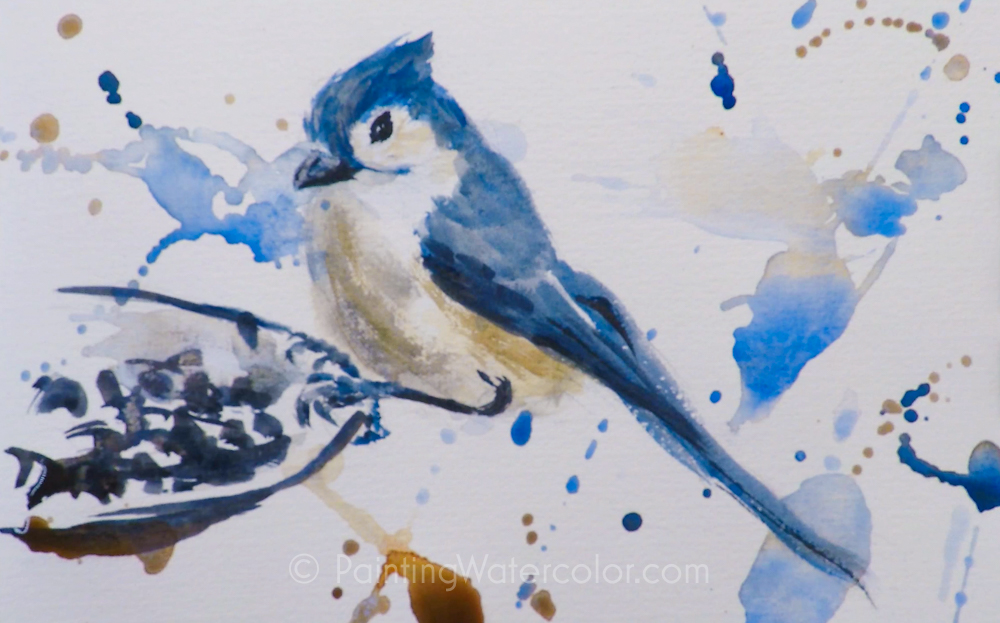
I'm in my studio so I want to take it to the next level! I want to keep things loose, but I can't resist adding fluffy feathers texture!
When you're painting feathers, always look at the direction the real bird's feathers grow in. They're around muscle groups, not random. Painting the feathers angled in the correct directions goes a long way toward making the bird feel more real.
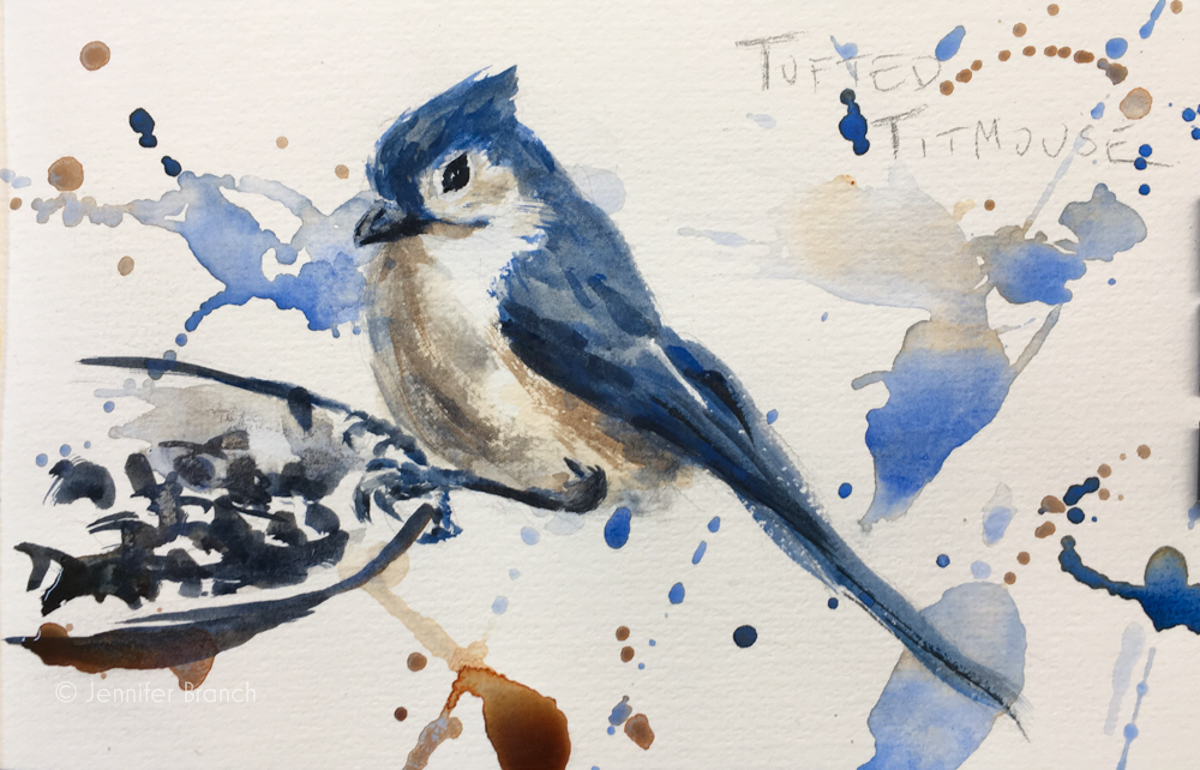
Final Watercolor Sketch!
So I used an extremely limited palette of 3 pigments. Obviously, I could have skipped the Ultramarine Blue as well and done the entire painting with Cobalt Blue only. However, I never restrict my pigments, unless I'm on location and run out of paint!
However, I do limit my pigments to only what I'm going to repeat throughout the painting. If you repeat the same colors all around the painting (or sketch) then it pulls the painting together.
It doesn't look like a coloring book, but a cohesive whole.
In a subject oriented sketch, like a bird, I rarely paint the background, unless I'm trying to work out how to paint the background. But without the background, it usually looks incomplete unless you add something. Splatter is a fun and easy solution!
I plan to paint several bird sketches over the course of the year. I have seen more species in my own backyard in Northwest Georgia than anywhere except the Florida Everglades. I love sketching them off my deck. Sketching backyard birds is one of the small pleasures of life.
I hope this inspires you to sit by your bird feeder and sketch your backyard birds.

Related Art Lessons


